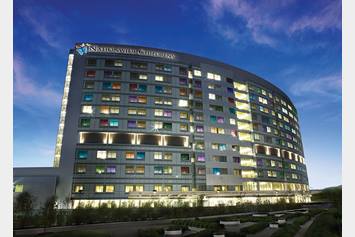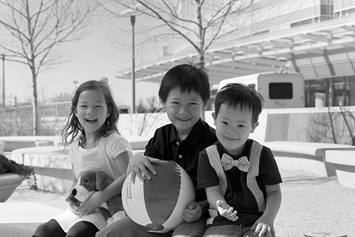Respiratory Distress
Respiratory distress is a condition where the body needs more oxygen. It can cause rapid breathing, difficulty breathing and low oxygen levels in the blood.
Respiratory distress is when a child has many signs and symptoms of breathing problems. Infections, chronic illness, or a blocked airway can cause respiratory distress. Children who were born early (premature) or have been in the hospital for respiratory problems may be at greater risk.
When your child has to work hard to breathe, it can mean they are not getting enough oxygen to the lungs or are starting to get an infection.
What Are Signs and Symptoms of Respiratory Distress?
To know if your child may be in respiratory distress, look for the following signs and symptoms (Picture 1):
- Pale or bluish skin color - Check around the lips, eyes, hands, and feet, especially the nail beds.
- Increased breathing rate - Count the number of breaths for 1 minute. Is your child breathing faster than usual?
- Retractions - Check to see if the chest pulls in with each breath, especially around the collarbone and the ribs.
- Nasal flaring - Check to see if the nose holes (nostrils) widen when breathing in.
- Noisy breathing - Listen for breathing that sounds like grunting, the “Ugh” sound, wheezing, or like mucus is in the throat.
- Clammy skin – Feel your child's skin to see if it's cool but also sweaty. The head may be sweaty while the skin feels cool or clammy.
- Mood change – Check to see if your child is sleepier, has problems waking up, is fussier than usual, or is just not acting like themselves.
- Change in body position – Your child may change their posture to try to breathe easier, like leaning forward or tilting their head up or backwards.
When To Call the Doctor
Call the doctor or health care provider if they:
- Shows any signs of respiratory distress.
- Has a high (fever) or low temperature:
- Rectal temperature over 100.4° Fahrenheit (F) or 38° Celsius (C) or less than 96.5°F (35.8°C) if younger than 4 months.
- Under the arm (axillary) temperature is more than 103°F (39.4°C), if older than 4 months.
- In the mouth (oral) temperature is over 102°F (38.9°C) for 3 days or higher than 104°F (40°C), if older than 4 years.
- Has a cough and phlegm or drainage is thick and yellow-green colored.
Call 911 or take your child to the nearest emergency department if their lips or face turns bluish, if they're working hard to breathe, or if you think their life is in danger.
How to Prevent Respiratory Infections
Not all breathing problems can be avoided. You can help prevent many respiratory infections by taking these steps:
- Do not smoke around your child or in places that they go, even when they're not there. Children who are around smokers get 2 times as many respiratory infections and colds as those who don't live with smokers. Smoke residue can build up on surfaces in rooms and cars.
- Keep places where your child will be dust-free.
- Do not use baby powder or cornstarch on your child. These things can irritate their lungs.
- Everyone in the home should practice good hand washing to keep germs from spreading.
- If you can, keep your child away from people who are sick.
Helping Hands Patient Education Materials
Written and illustrated by medical, nursing and allied health professionals at Nationwide Children's Hospital, Helping Hand instructions are intended as a supplement to verbal instructions provided by a medical professional. The information is periodically reviewed and revised to reflect our current practice. However, Nationwide Children's Hospital is not responsible for any consequences resulting from the use or misuse of the information in the Helping Hands.
HH-I-178 | ©1993, revised 2023, Nationwide Children’s Hospital



